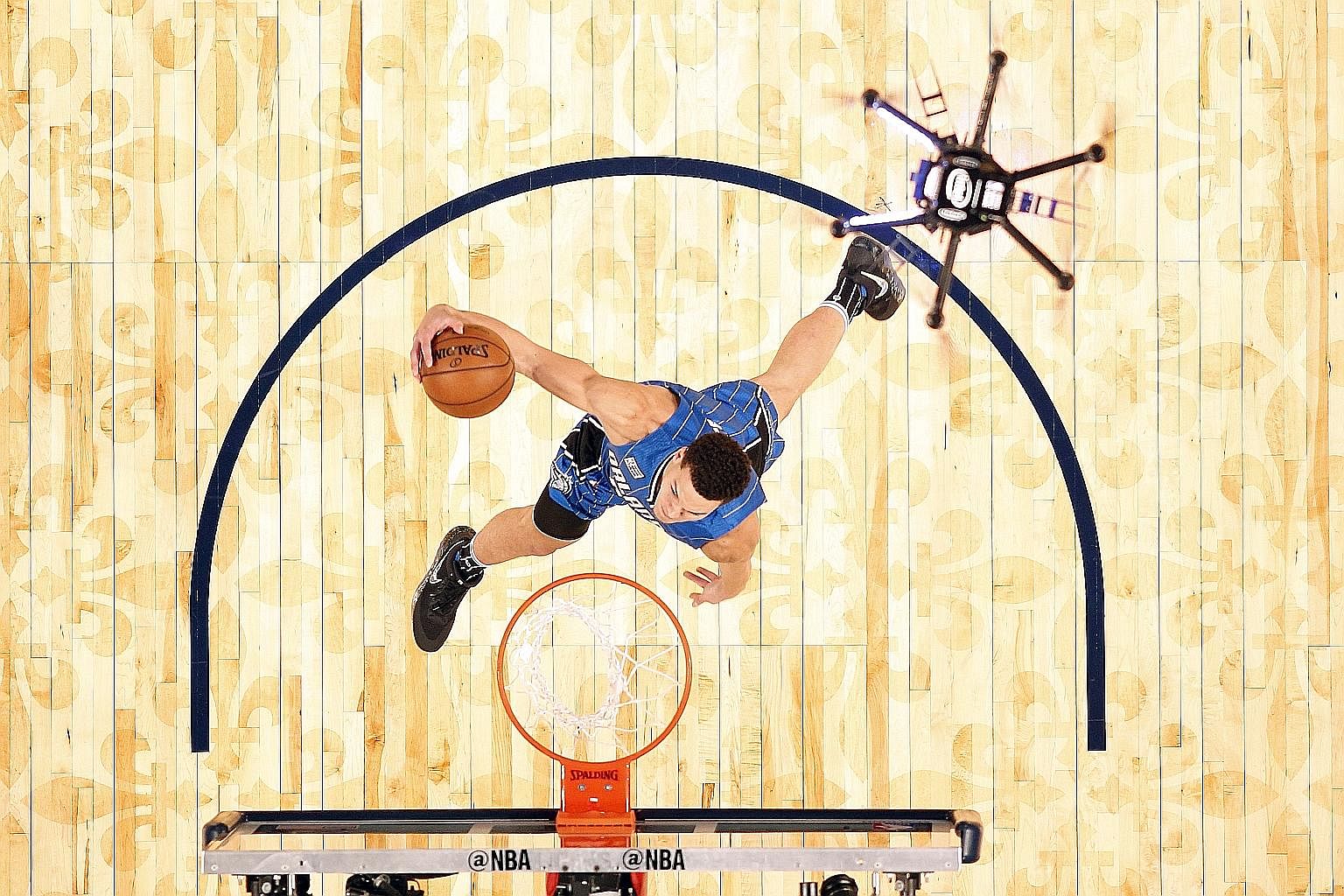The runner who stands before us on television looks like everyone else, but he may be like no one else.
His difference could be in the fabric he wears, the amount of liquids he drinks, the food his dietitian has chosen for him. His victory may be assisted by training in high-altitude rooms, filming his stride with motion-capture cameras and examining his blood. This is not any man but a champion who has been measured, tested, studied and reduced to numbers. He is a brilliant human, partly built by technology.
Technology invades almost every part of sport. It is no longer on the fringes but has stylishly taken centre stage. Cameras fly on wires above tennis courts as athletes drink tailor-made drinks at changeovers and crowds clap in anticipation as Hawk-Eye goes to work on the big screens. Technology could help decide a match, by a millimetre, in the next few seconds.
BUT WAIT, IS TECHNOLOGY NEW TO SPORT?
Of course not. Especially if we can stretch the meaning of technology a little bit. If today marathoners follow highly detailed training methods, the old days had their own version of scientific input.

During the first Olympic marathon in 1896 - so wrote David Wallechinsky in The Complete Book Of The Olympics - one runner was revived with an alcohol rub, while another was sustained by a health drink of those days: egg and brandy.
Elsewhere, photo-finish cameras slowly came into focus and just at the right time. In 1952, the second time they were used at an Olympics, Lindy Remigino won over Herb McKenley only because the camera showed his shoulder arrived at the finish one inch ahead of his rival.
-
About The Big Quiz
-
 Each Monday, the paper's journalists will address burning questions in the Opinion section, offering unique Singaporean perspectives on complex issues.
Each Monday, the paper's journalists will address burning questions in the Opinion section, offering unique Singaporean perspectives on complex issues.These primers form part of the outreach of The Straits Times-Ministry of Education National Current Affairs Quiz, or The Big Quiz, which aims to promote an understanding of local and global issues among pre-university students.
Underpinning this year's Big Quiz is a focus on disruption, a timely issue as various sectors and industries adapt to this global change. The theme will be featured in six campus talks helmed by editors and correspondents.
Six quiz rounds will also be held for students to demonstrate their current affairs knowledge.
The nationwide event is jointly organised by The Straits Times and the Ministry of Education, with the Singapore Press Holdings Foundation as its presenting sponsor.
Pre-university schools and institutions can note this date to participate in the final quiz round and talk:
• May 12 at Eunoia Junior College
• For more information or to view additional resources, go to https://www.straitstimes.com/tags/ the-big-quiz
• For more information related to sports, go to: http://str.sg/42oH
Athletes sometimes just had to rely on their own ingenuity and intelligence. The great Edwin Moses, who once won 122 consecutive 400m hurdles races, brought logic and physics to his art in the 1970s.
As he told an Indian newspaper once: "I had the opportunity to live with a ballet dancer who was my college roommate. I got to learn what they were doing physically, so I incorporated my background in physics and engineering, biology and chemistry. I completely understood physiology, developed my own stretching techniques, learnt how to hurdle; no one ever taught me how to hurdle."
Moses brought a scholarship to sport; John McEnroe, however, another genius of the 1970s, was deeply sceptical of technology. Long before we met David Blaine, it was McEnroe, with a tennis racket, who was our introduction to magic. A player of fabulous feel, McEnroe was more artist than scientist, which resulted in one of the most hilarious lines in sport. Referring to Cyclops, the name given to one of the original electronic line-calling devices which decided whether a serve was in or out, he said: "I don't want to sound paranoid but that machine knows who I am."
WHY DO WE LIKE TECHNOLOGY IN SPORT?
Mostly because it does two things. First, it helps in the viewing experience. At Formula One races, you feel like you are right there, in the midst of a movie chase sequence because of the cameras on the machines. Elsewhere, cameras are fitted onto drones and move underwater to give a view of turns.
At the Rio Olympics aquatic centre one morning, I discovered that each swimming lane had an underwater monitor which informed swimmers how many laps were left in their race. But no longer is the information collected on sport available only for athletes: Technology has ensured that fans, too, get data on split times and speed of serve and reaction times. We know, almost immediately, what sprinter Usain Bolt did well.
SO WHAT'S THE SECOND THING?
The second thing is that technology aids athletes. It cannot make champions, but it can polish talent; it takes gifted people and tries to find advantages for them. This requires mini-armies with exceedingly sharp minds, all possessed by a single idea: Add value to the athlete.
In sporting movies of the old days, the athlete had only one primary aid: the coach, usually balding, with a towel over his shoulder, who made heroic and hysterical speeches. These days the athlete is followed by a biomechanist, sleep specialist, nutritionist, podiatrist, trainer, physiologist, physiotherapist and skill acquisition specialist.
Brilliance is born from detail and victory is often the child of data. Just the way a hurdler lands her foot can be perfected and make her 0.2 of a second faster.

Cyclists, as a scientist at the Australian Institute of Sport once told me, will study Olympic courses and video them, and then decide which are the technical turns, where to attack, what the weather usually is on that precise day and thus how much fluid should be drunk.
Even during "live" matches, information is constantly collected, and then immediately dispersed.
At the Rio Olympics, says Richard Gordon, the head of high performance sports at the Singapore Sports Institute, match analysis was being sent in real time to the Japanese table tennis team via iPad when they played Singapore in the women's bronze-medal play-off.
SO DID S'PORE USE TECHNOLOGY AT THE RIO OLYMPICS?
Sure, we did, in various ways. The best example probably involves Olympic 100m butterfly champion Joseph Schooling and biomechanist Ryan Hodierne for this was art and science in an edgy mix. Hodierne filmed every session Schooling swam and relayed information to athlete and coach. He also prepared race profiles, like the one after the final which compared Schooling and the American legend Michael Phelps and broke down their performances into numerous categories such as this:
How fast they swam each lap, how many strokes they took per lap and how far each stroke took them. How quick they were over the first 15m and also the last 25m. Their reaction time off the blocks, the metres covered every second and the time taken during the turn. It was like a masterful digital autopsy.
Of course to win gold, Schooling had to believe, and be brave, and swallow pressure, and think clearly amid the pandemonium, but he was also being aided with information with which to make a plan on how to hunt down the world.
But data had already done Schooling, 21, and Singapore a service. Data, says Gordon, is what scientists used to dutifully measure the swimmer through his teenage years: How fast was he swimming, how did he stack up, where could he go, could an Olympic medal be won, what he needed to get there, how other countries would be performing, and how education and national service could best fit his long-term performance development plans. It worked.
HOW IS TECHNOLOGY AND SPORTS SCIENCE GOING TO HELP S'PORE ATHLETES?
In this small nation, without the width of population to choose from, we have to be smarter. We have to think, plan, study. We have to pore over data like Matt Damon in The Martian and then, as he said, "science the s**t out of this".
Find the cleverest ways to improve athletes; discover agile ways to invest resources; meet problems with nimble solutions. Singapore athletes, for instance, can be overworked, often unable to find enough sleep between school and study and part-time jobs and training. So scientists will have to work alongside them so rest is given its proper due.
BUT DOES TECHNOLOGY HAVE A DOWNSIDE?
Yes, in some ways. Purists especially feel that it can be disruptive, affecting the very foundation of how we view and watch a game.
Hawk-Eye might work in tennis, because, with its towelling interludes and water breaks and sit-downs, it is anyway a stop-start game.
But football's most elementary beauty is its flow, its uninterrupted stream of skill, its refusal over centuries to shift from its two halves of 45 sweeping minutes, and goal-line technology would interfere with that. It would stop football? Is it worth it?
Technology, like so much else in sport, also comes at a cost and at every Olympics we calculate the dollars spent for every gold. Excellence has a price greater than sweat and economically disadvantaged nations struggle merely to find basic equipment. Sport is never as equal as it looks.
Of course, we cannot stop technology for we cannot halt the brilliant advance of humankind. Yet it will steal some of the romance from sport.
We will never have another Abebe Bikila, of Ethiopia, who won the Olympic marathon in 1960 while running barefoot. Now his gait would be filmed in a sports lab, his foot examined, his shoe custom-made. Perhaps, of course, that is progress.

